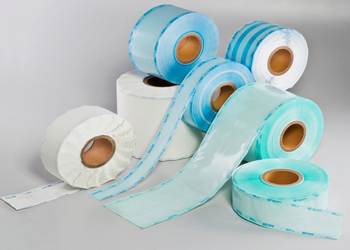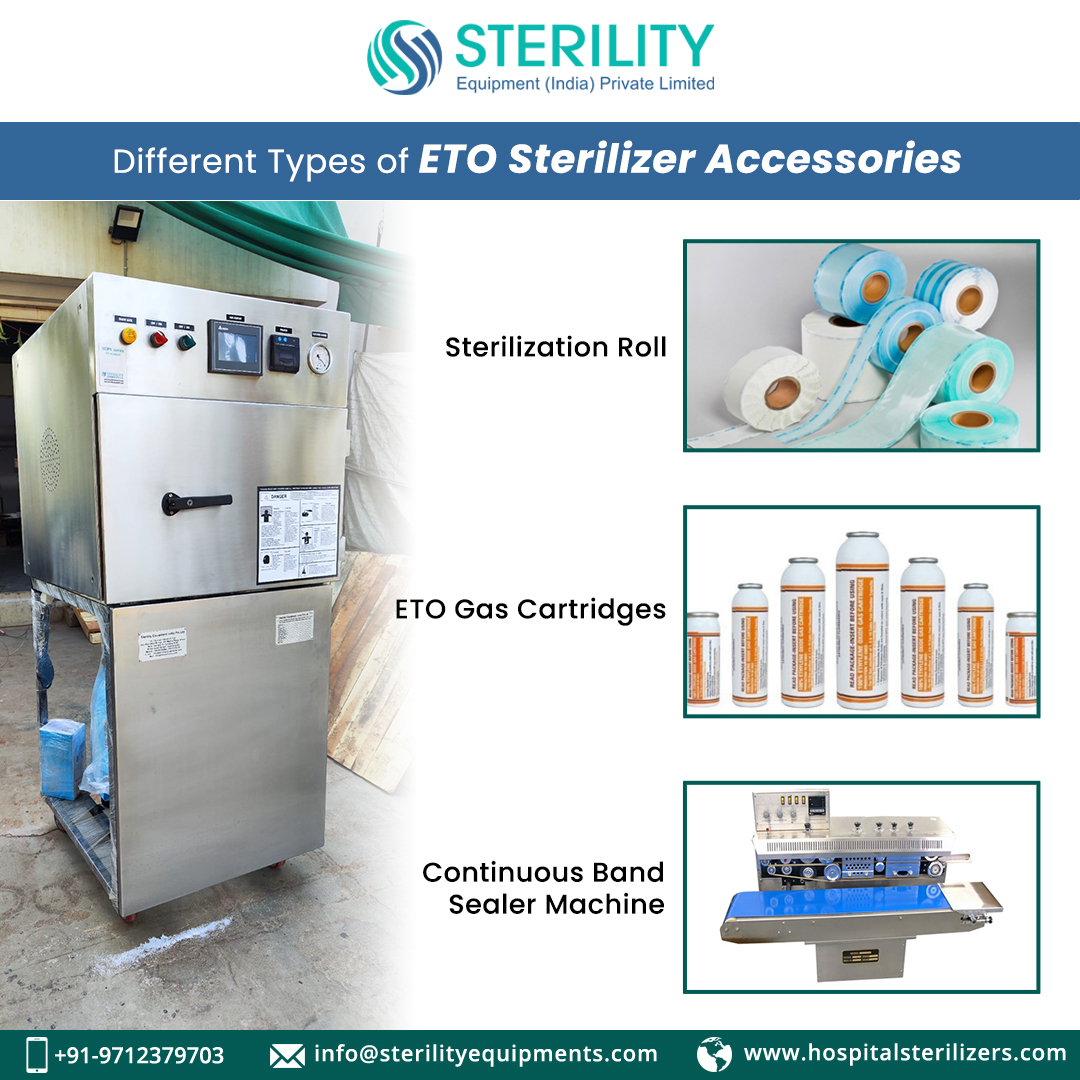When choosing a sterilization roll, one of the most critical factors to consider is its compatibility with the materials to be sterilized. Each sterilization method interacts differently with various materials, and using the wrong type of roll can compromise the effectiveness of the process and pose potential risks to patients and staff.
For steam sterilization, ensure the roll is made from materials that can withstand high temperatures and moisture without degrading or releasing harmful substances. For ethylene oxide sterilization, select a roll that is gas-permeable to allow proper penetration. In gamma irradiation, the roll should be able to maintain its integrity under exposure to radiation.
To ensure safe sterilization, thoroughly research the materials used in the items to be sterilized and choose a compatible sterilization roll that complements the specific sterilization method employed in your facility. By prioritizing material compatibility, you can be confident in achieving optimal sterilization results while upholding the highest standards of quality and safety.
Material Compatibility: Ensuring Safe Sterilization
Material compatibility is a crucial factor to consider when choosing a sterilization roll for safe and effective sterilization. Different materials may react differently to various sterilization methods, such as steam, ethylene oxide, or gamma irradiation. Selecting the wrong type of roll can lead to potential damage or inadequate sterilization, jeopardizing both patient safety and the integrity of the items being sterilized.
To ensure a successful sterilization process, thoroughly assess the materials used in the items to be sterilized and choose a roll that is specifically designed to work well with those materials. A compatible sterilization roll will ensure that the sterilization method can penetrate and treat the items effectively without causing any harm.
By prioritizing material compatibility, you can rest assured that your sterilization process will yield optimal results, maintaining the quality and safety standards necessary in medical and healthcare facilities.

Sterilization Method: Matching the Right Roll
Matching the right sterilization roll with the chosen method is paramount to achieving optimal and efficient sterilization results. Different sterilization methods, such as steam, ethylene oxide, and gamma irradiation, have unique requirements that necessitate specific types of sterilization rolls.
For steam sterilization, a roll made from materials that can withstand high temperatures and moisture is essential to maintain integrity throughout the process. Steam must penetrate the roll and the items being sterilized effectively, ensuring thorough sterilization.
In ethylene oxide sterilization, a gas-permeable roll is crucial to allow proper penetration of the sterilant gas. This ensures that the gas can reach all areas of the items, guaranteeing complete sterilization.
For gamma irradiation, a roll that can withstand exposure to radiation is necessary to protect the items and maintain their sterility. Gamma irradiation is effective in sterilizing items that might be heat or moisture-sensitive, making it a valuable method in various settings.
Packaging Size: Finding the Perfect Fit
Finding the perfect fit in the packaging size of the sterilization roll is essential for a successful sterilization process. The size of the roll should align with the sterilization equipment being used in your facility, ensuring seamless integration and operation.
An appropriately sized roll allows the sterilization equipment to function optimally, maximizing its capacity and efficiency. It ensures that the sterilization process is not compromised by inadequate or excessive roll dimensions.
Moreover, a well-fitted roll accommodates the items to be sterilized comfortably. It prevents overcrowding, which could hinder proper sterilization, and minimizes wasted space, optimizing the use of the sterilization equipment’s capacity.
Quality Assurance: Trusted Roll Manufacturers
Opting for sterilization rolls from reputable and trusted manufacturers is crucial to ensuring the highest quality and safety standards. Quality assurance plays a vital role in guaranteeing that the rolls meet industry regulations and guidelines.
Reliable manufacturers have established a reputation for producing sterilization rolls that consistently deliver effective results. They prioritize the use of high-quality materials and adhere to stringent manufacturing processes. As a result, their rolls are less likely to malfunction or compromise the sterilization process.
One of the key benefits of choosing rolls from trusted manufacturers is the availability of certifications. These certifications serve as tangible evidence of the product’s effectiveness and compliance with industry standards. They provide peace of mind to users, assuring them that the chosen roll has undergone rigorous testing and quality checks.
Cost-Effectiveness: Balancing Quality and Budget
Considering the cost-effectiveness of the sterilization roll is essential for maintaining a sustainable operation without compromising on quality or safety. While quality is of utmost importance in the sterilization process, it is equally vital to find a balance that aligns with your budget constraints.
Seeking cost-effective options involves exploring sterilization rolls that meet both quality standards and budget limitations. Look for reputable manufacturers that offer competitive pricing without compromising on the roll’s effectiveness. Comparing different options can help identify the best value for money while ensuring the desired level of sterilization efficacy.
Keep in mind that cost-effectiveness should not translate to compromising on safety. Always prioritize the quality and reliability of the sterilization roll, as inadequate products may lead to subpar sterilization outcomes and potential risks to patients or users.
By striking the right balance between quality and budget, you can optimize the sterilization process’s efficiency and effectiveness while ensuring the financial sustainability of your operations. Invest in a cost-effective sterilization roll that meets the necessary standards, contributing to a successful and safe sterilization practice in healthcare facilities, laboratories, and other industries where sterilization is a critical aspect.
Environmental Impact: Sustainable Sterilization Choices
As environmental awareness continues to increase, the importance of making sustainable choices extends to the realm of sterilization practices. When selecting sterilization rolls, it is crucial to prioritize options with minimal environmental impact and embrace eco-friendly alternatives.
Opt for sterilization rolls made from sustainable materials, such as biodegradable or recyclable substances. These materials reduce the overall environmental footprint and contribute to a greener and more eco-conscious approach to sterilization processes.
Additionally, consider the packaging of the sterilization rolls. Eco-friendly packaging, such as using recycled materials or reducing unnecessary packaging waste, further enhances the sustainability of your sterilization practices.
Sterilization Process Efficiency: Enhancing Workflow
Efficiency in the sterilization process is a key consideration, especially for busy facilities that handle a high volume of sterilization tasks. To enhance workflow and optimize resource utilization, it is crucial to choose sterilization rolls that contribute to a streamlined and efficient process.
Look for sterilization rolls that are easy to load and unload in sterilization equipment, reducing the time required for preparation and handling. Rolls with user-friendly features can expedite the process and free up valuable staff time for other critical tasks.
Consider the sterilization roll’s capacity to accommodate multiple items simultaneously. Rolls with larger capacity can increase the number of items sterilized in each cycle, reducing the overall processing time and boosting efficiency.
Storage and Handling: Preserving Roll Integrity
Proper storage and handling of sterilization rolls are paramount to preserving their integrity and ensuring their effectiveness. Adhering to manufacturer guidelines for storage conditions and handling procedures is essential in maintaining the roll’s quality throughout its shelf life.
When storing sterilization rolls, it is crucial to keep them in a clean, dry, and controlled environment. Avoid exposure to extreme temperatures or humidity, as these factors can compromise the roll’s material and effectiveness. Store the rolls away from direct sunlight and chemicals that may cause deterioration.
Additionally, handle the sterilization rolls with care to prevent any damage that could affect their performance. Avoid rough handling or dropping the rolls, which can lead to tears, creases, or contamination.
Follow the manufacturer’s instructions for loading the rolls into the sterilization equipment properly. Incorrect loading may lead to incomplete sterilization or cause damage to the equipment and the roll itself.
Regularly inspect the rolls for signs of damage or wear. If any defects are detected, replace the roll immediately to ensure continued effectiveness during the sterilization process.
Compliance and Regulations: Meeting Standards
Compliance with sterilization regulations and industry standards is of utmost importance to ensure a safe and compliant facility. Adhering to these guidelines is essential for maintaining the highest level of sterilization efficacy and patient safety.
Stay updated with the latest sterilization regulations and standards set forth by relevant authorities and professional organizations. Ensure that your chosen sterilization roll meets all the necessary requirements specified in these guidelines.
Look for sterilization rolls that have been tested and approved by regulatory bodies. Certifications and approvals from recognized authorities provide assurance that the roll complies with industry standards and has undergone rigorous testing for safety and effectiveness.
Regularly conduct audits and inspections to ensure that your facility is operating in full compliance with sterilization regulations. This includes not only using compliant sterilization rolls but also following correct sterilization procedures and documentation.






